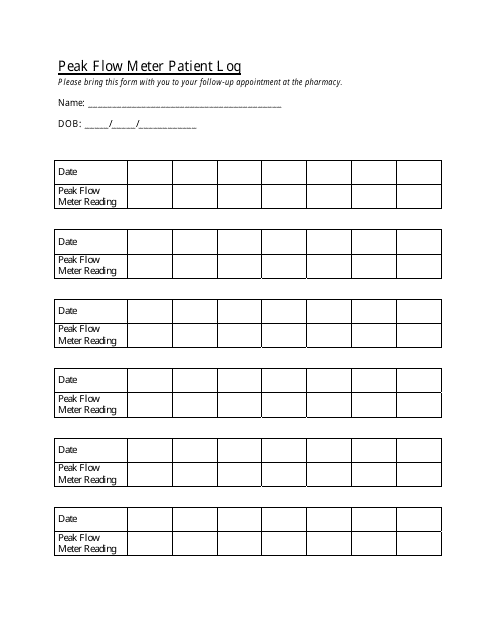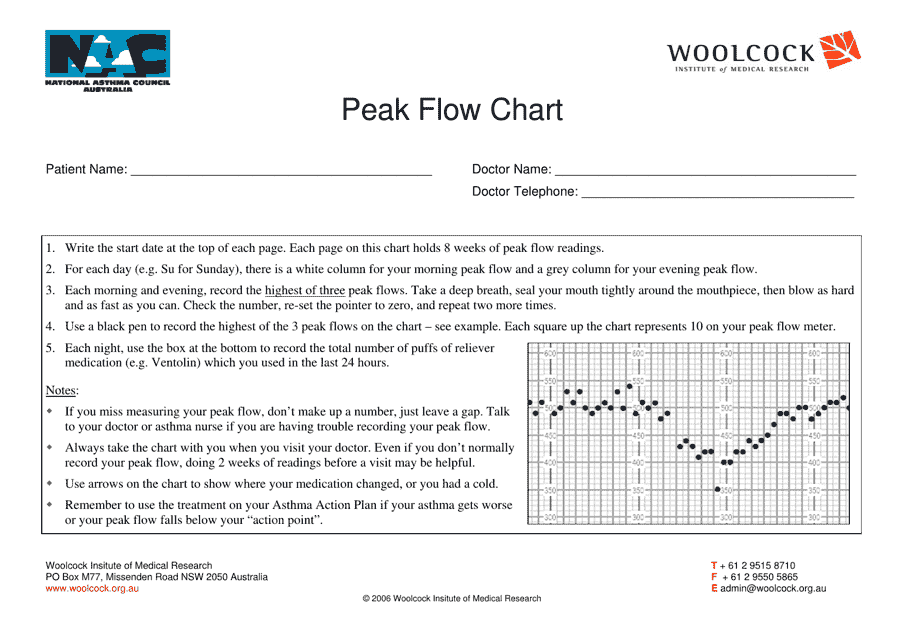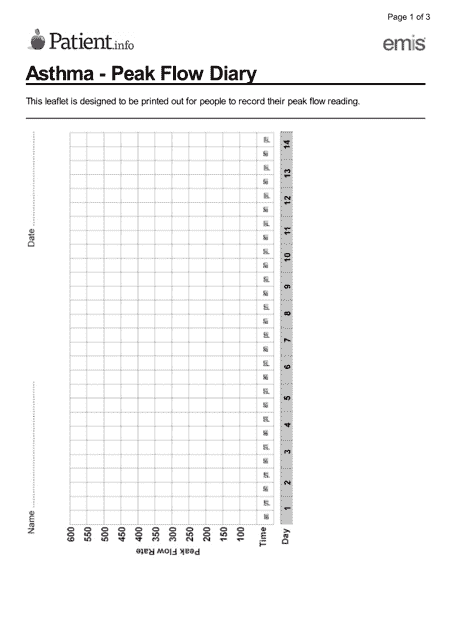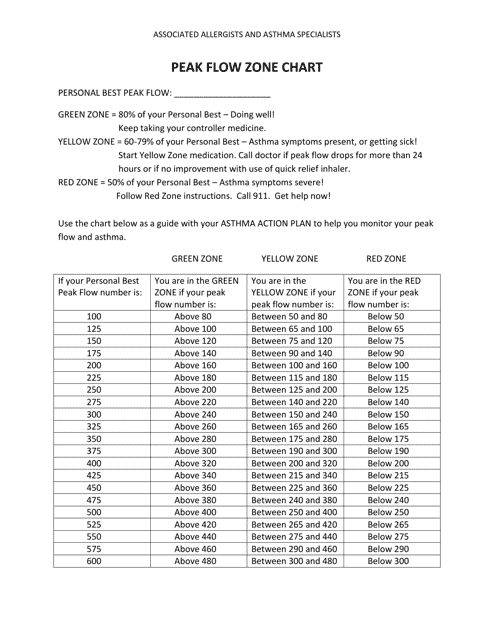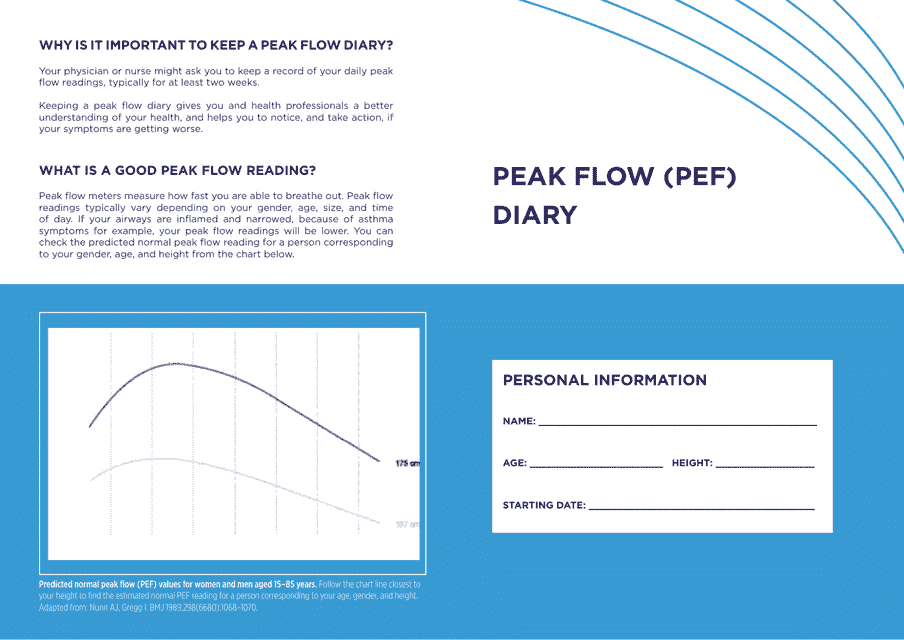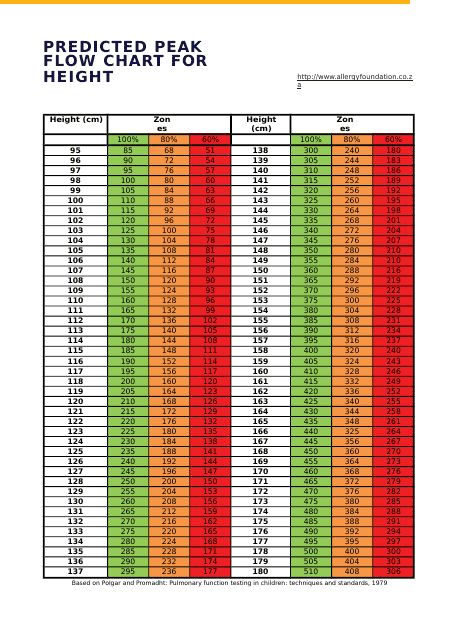Free Peak Flow Meter Chart Templates
What Is a Peak Flow Meter Chart?
A Peak Flow Meter Chart refers to a list of results received during medical tests - it is completed by a patient that regularly measures their peak flow rate by pushing the air out of their lungs.
Alternate Name:
- Peak Flow Chart.
Asthma patients are often advised by their healthcare providers to acquire a Peak Flow Meter – a small medical device designed to discover how fast the user can exhale forcefully. It is necessary to use this device on a daily basis and later share the results with the doctor in order to deal with an existing illness or monitor potential health issues. A doctor can analyze the information from the chart you regularly fill out, diagnose you with a health condition, or increase or lower the dosage of medication to ensure you are receiving appropriate care.
You may see a full list of Peak Flow Meter templates - check out our library below.
How to Use a Peak Flow Meter?
Here is how you are supposed to evaluate your peak flow and make the most out of a Peak Flow Meter prescribed to you:
-
Take the measurements with the right posture whether you are standing up or sitting during the process . Look at the device and confirm the marker is in the default position before you inhale and put the device in your mouth. With one blow, try to exhale with all the strength and speed you can muster. Note the result the meter shows and put the marker in the initial position. Repeat the procedure twice – the top rate is going to represent your peak flow.
-
Complete a chart that looks like a simple table – you can write down the date of the procedure, its exact timing, and the measurements. It may be easier for your doctor to deal with submitted paperwork if you indicate your name at the top of the document. Use the device every day two or three times – depending on the recommendations you have received from the doctor. Remember that the Peak Flow Meter measurements have to be obtained at the same time of the day prior to the use of inhalers or similar respiratory devices. Other symptoms or anything unusual related to your breathing should be put in the remarks section next to the specific day.
-
After you consult with the doctor, you will learn that factors like age, gender, and your overall health will impact your results, so in case you are examining your own breathing, use a Peak Flow Meter Chart by age and make necessary adjustments in accordance with other physical characteristics . The healthcare provider will tell you what your best result is – record this information and see if you are failing to show the same rate consistently and struggling to handle the disease. In case the measurements are more than 50-60% worse than your peak flow, immediately book an appointment with a medical professional or seek emergency assistance.
Still looking for a particular template? Take a look at the related templates below:
Documents:
8
This document shows a chart that tracks changes in your peak flow measurements over time. It helps you monitor and manage your asthma symptoms.
This document is a template that helps patients track their peak flow measurements. It provides a convenient way to monitor and record lung function over time.
This document provides a peak flow chart that helps individuals monitor their lung function.
This type of document is a Peak Flow Tracking Chart used to measure and record peak flow readings for individuals with respiratory conditions like asthma.
This document is a peak flow diary for tracking asthma symptoms and measuring lung function.
This document provides a chart that indicates the peak flow zones for individuals with respiratory conditions. The chart helps monitor lung function and determine the appropriate treatment based on the achieved peak flow readings.
This document is a peak flow (PEF) diary chart used to track and record peak flow measurements.
This document is designed to help track and predict an individual's peak flow rate based on their height. It helps in monitoring lung function and managing respiratory conditions like asthma.


